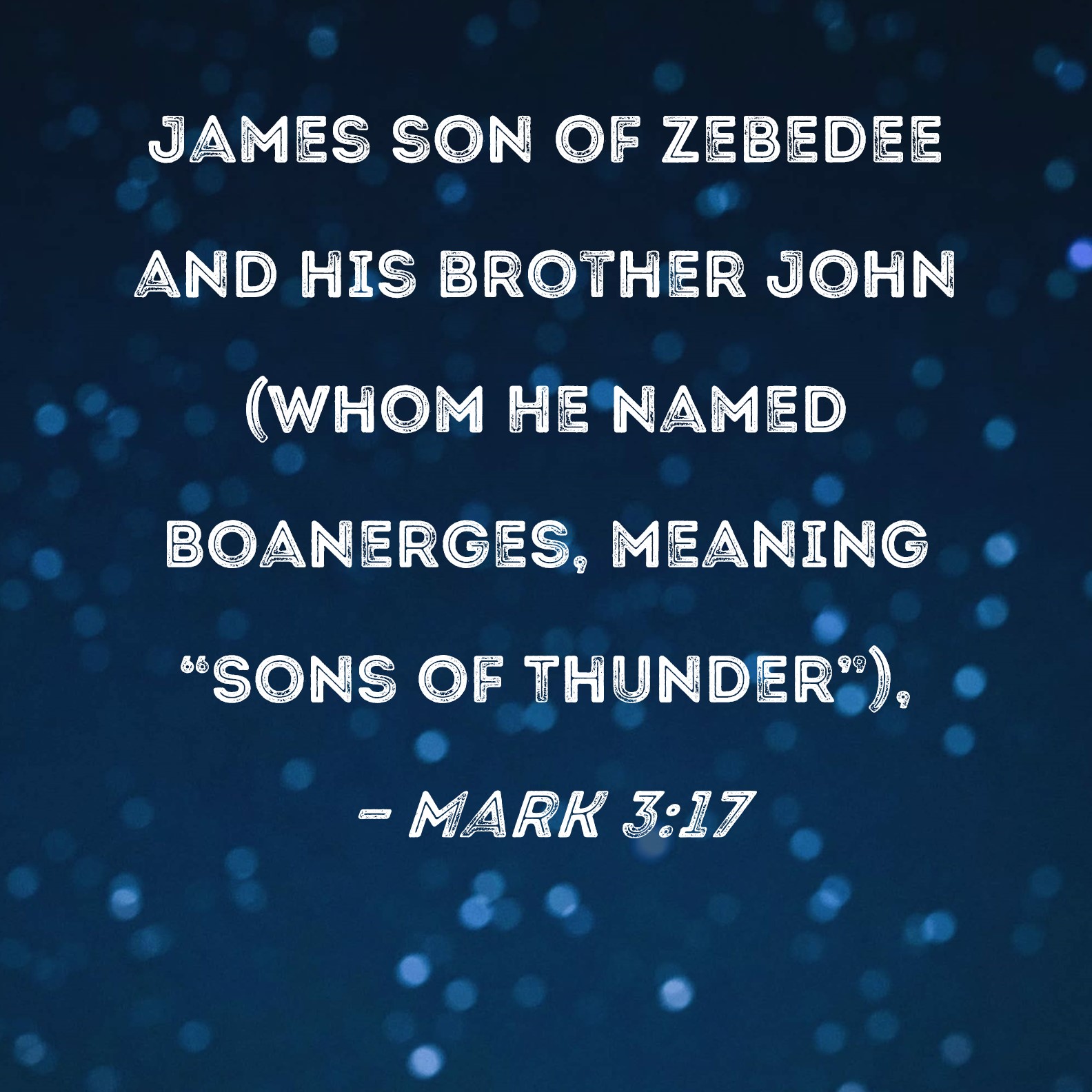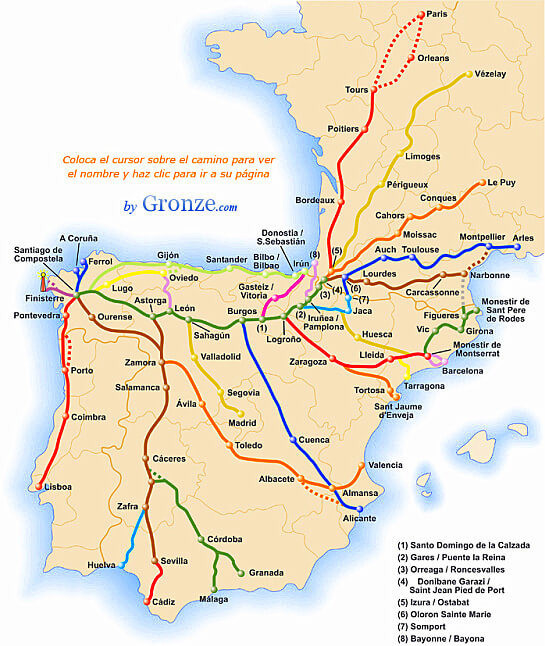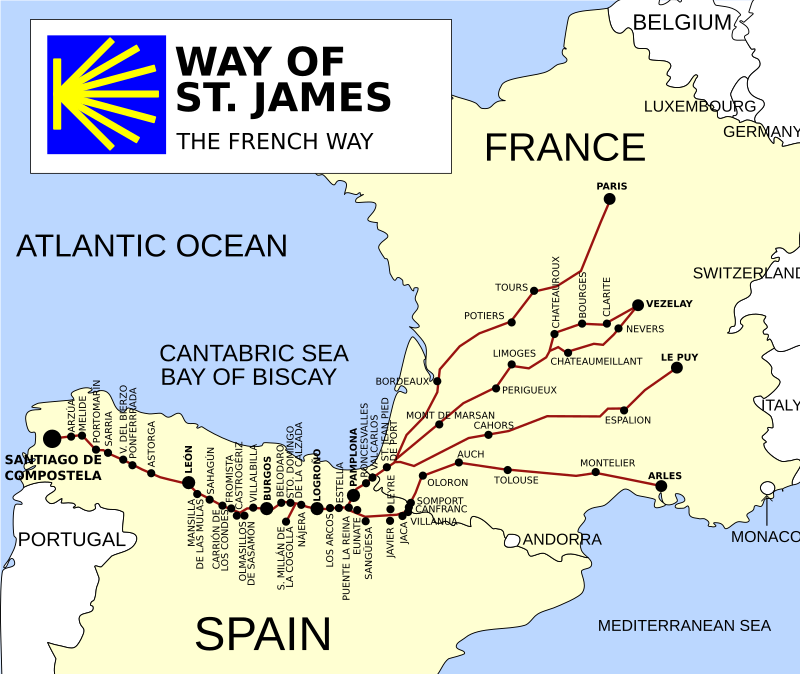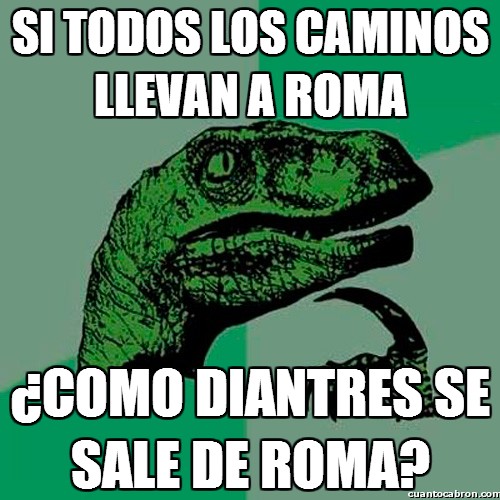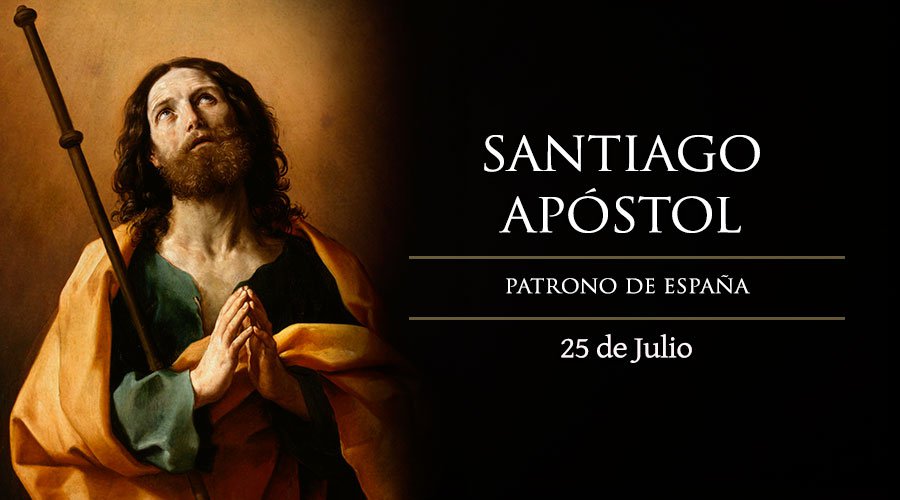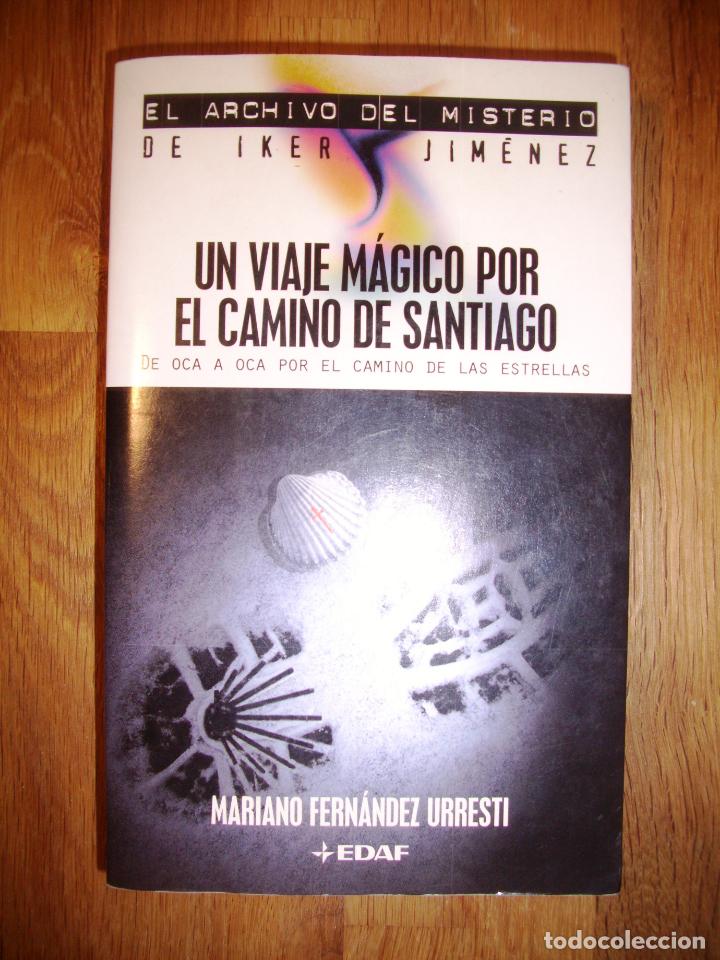|
|
General: THE WAY OF SAINT JAMES (SANTIAGO DE COMPOSTELA - THE SPANISH MECCA)
Escolher outro painel de mensagens |
|
|
|
|
| , MA History, BA History

Jesus Christ had twelve disciples, each of whom accompanied the Biblical savior during His time on earth. Many of them continued His Christian work after the ascension. The twelve men were Peter, James (Jesus’ brother), John, Andrew, Philip, Judas Iscariot (who betrayed Jesus, and was replaced by Matthias), Matthew, Thomas, James, the son of Alpheus, Bartholomew, Judas Thaddeus; and Simon the Zealot. Of them all, Saint James, also known as James, brother of Jesus, James, son of Alpheus, James the Lesser, James the Minor, and James the Just, was one of the most prominent and significant.
James, Son of Alphaeus, James the Greater, and James, the Brother of Jesus
 St James the Minor, Peter Paul Rubens, 1613. Source: Wikipedia St James the Minor, Peter Paul Rubens, 1613. Source: Wikipedia
Various Gospels are often ambiguous, at times, as to which James is being referenced. Two to three James’s are spoken of in the Gospels – James, brother of John (aka James the Greater); James, brother of Jesus, and James, son of Alphaeus. The Catholic doctrine of the perpetual virginity of Mary holds that James the son of Alpheus and James, brother of Jesus are the same person, as James could not be Jesus’ physical full brother. In Protestant readings, the two are separate. If the two are separate, then very little is known regarding James, son of Alpheus.
James, Brother of Jesus
 Statue of St. James the Less in the Archbasilica of St. John Lateran by Angelo de Rossi. Source: Wikipedia Statue of St. James the Less in the Archbasilica of St. John Lateran by Angelo de Rossi. Source: Wikipedia
James, the brother of Jesus, was a follower and Disciple of Jesus Christ during His earthly ministry and one of the first leaders of the early Christian Church. He remained in Jerusalem as leader of the church following the death, burial, resurrection, and ascension of Jesus, and was likely martyred at the temple in Jerusalem.
James’ Position in the Early Church
 St. James the Minor, by Georges de la Tour, 1615-20. Source: Wikipedia St. James the Minor, by Georges de la Tour, 1615-20. Source: Wikipedia
Get the latest articles delivered to your inbox
Sign up to our Free Weekly Newsletter
In Acts 15, a Council in Jerusalem was held regarding circumcision over which James presided. The Acts 15 Council is considered probably the first Christian council, where many Apostles congregated to discuss the matter brought by Paul and Barnabas. In Galatians 1, the Apostle Paul records a meeting with James in the process of Paul confirming his conversion to the other Apostles. James may have been the first elected leader within the early church. Through the writings of Eusebius in the 200s, we have the records of Clement of Alexandria from the second century that James was elected leader of the Jerusalem Church.
St James Was Martyred
 Saint James the Less (Menologion of Basil II). Source: The Byzantine Life Saint James the Less (Menologion of Basil II). Source: The Byzantine Life
The death of James the Just around 62 CE is recorded by Eusebius, Clement of Alexandria, and Josephus. Eusebius copied the chronicles of an earlier Christian, Hegesippus, who wrote that James was martyred by being thrown from the pinnacle of the temple in Jerusalem, and beaten with a club when the fall did not kill him.
Non-canonical Writings Attributed to Saint James
 The Protoevangelium of James, James Orr. Source: Rakuten Kobo The Protoevangelium of James, James Orr. Source: Rakuten Kobo
The Gospel of James, also known as The Protoevangelium of James, is a book of unknown source that was being circulated within the second century church. Both Origen and Clement of Alexandria reference the book in their writings, so it was at least written around that time. The Gospel of James contains the first mention of the idea of the perpetual virginity of Mary, the mother of Jesus. The book was condemned by Pope Innocent I in 405, and it has generally not been accepted throughout church history as canonical due to its late writing and inconstant content.
The First and Second Apocalypse of James and the Apocryphon of James are other 2nd century books whose author claimed to be James. Each of these books were from a collection of gnostic (secret knowledge) texts found in Egypt in 1945. In addition to an authorship too late to be James, they are also part of gnostic texts written in an attempt to legitimize the early movement within Christianity.
James, the Son of Alphaeus
 Two Martyr Saints in an Initial S (Alphaeus and Zacchaeus), 14th century. Source: Victoria and Albert Museum Two Martyr Saints in an Initial S (Alphaeus and Zacchaeus), 14th century. Source: Victoria and Albert Museum
James the son of Alphaeus, while mentioned in the listings of the apostles, has very few details known regarding his life. Outside of being listed among the apostles, and described in the Gospel of Mark as “the lesser” or “the smaller,” he is barely mentioned in the Bible. Several early Christian writings attempt to identify him with James the Just, but most try to maintain the perpetual virginity of Mary in a complex manner. It is speculated that he died as a martyr by crucifixion in Ostrakine, Egypt.
https://www.thecollector.com/who-was-saint-james-brother-of-jesus/ |
|
|
|
|
|
|
|

Hoja informativa del proyecto Viking
Cortesía de la NASA
Viking fue la culminación de una serie de misiones para explorar el planeta Marte ; comenzaron en 1964 con el Mariner 4, y continuaron con los sobrevuelos del Mariner 6 y 7 en 1969, y la misión orbital del Mariner 9 en 1971 y 1972.
La Viking fue diseñada para orbitar Marte y aterrizar y operar en la superficie del planeta. Se construyeron dos naves espaciales idénticas, cada una compuesta por un módulo de aterrizaje y un orbitador.
El Centro de Investigación Langley de la NASA en Hampton, Virginia, fue el responsable de la gestión del proyecto Viking desde su inicio en 1968 hasta el 1 de abril de 1978, cuando el Laboratorio de Propulsión a Chorro asumió la tarea. Martin Marietta Aerospace en Denver, Colorado, desarrolló los módulos de aterrizaje. El Centro de Investigación Lewis de la NASA en Cleveland, Ohio, fue el responsable de los vehículos de lanzamiento Titán-Centauro. La tarea inicial del JPL fue el desarrollo de los orbitadores, el seguimiento y la adquisición de datos, y el Centro de Control de Misión y Computación.
La NASA lanzó ambas naves espaciales desde Cabo Cañaveral, Florida: la Viking 1 el 20 de agosto de 1975 y la Viking 2 el 9 de septiembre de 1975. Las sondas fueron esterilizadas antes del lanzamiento para evitar la contaminación de Marte con organismos de la Tierra. La nave espacial pasó casi un año navegando hacia Marte. La Viking 1 alcanzó la órbita de Marte el 19 de junio de 1976; la Viking 2 comenzó a orbitar Marte el 7 de agosto de 1976.
Después de estudiar las fotografías del orbitador, el equipo de certificación del sitio de aterrizaje de Viking consideró que el lugar de aterrizaje original de Viking 1 no era seguro. El equipo examinó los sitios cercanos y Viking 1 aterrizó el 20 de julio de 1976 en la ladera occidental de Chryse Planitia (las llanuras de oro) a 22,3° de latitud norte y 48,0° de longitud.
El equipo de certificación del sitio también decidió que el lugar de aterrizaje planeado para Viking 2 no era seguro después de examinar fotografías de alta resolución. La certificación de un nuevo lugar de aterrizaje se llevó a cabo a tiempo para un aterrizaje en Marte el 3 de septiembre de 1976, en Utopia Planitia, a 47,7° de latitud norte y 225,8° de longitud.
La misión Viking estaba prevista para continuar durante 90 días después del aterrizaje. Cada orbitador y módulo de aterrizaje funcionó mucho más allá de su vida útil prevista. El Viking Orbiter 1 superó los cuatro años de operaciones de vuelo activas en la órbita de Marte.
La misión principal del proyecto Viking finalizó el 15 de noviembre de 1976, 11 días antes de la conjunción superior de Marte (su paso por detrás del Sol). Después de la conjunción, a mediados de diciembre de 1976, los controladores restablecieron las operaciones de telemetría y comando y comenzaron las operaciones de la misión extendida.
La primera nave espacial que dejó de funcionar fue la Viking Orbiter 2 el 25 de julio de 1978; la nave espacial había utilizado todo el gas de su sistema de control de actitud, que mantenía los paneles solares de la nave apuntando al Sol para alimentar el orbitador. Cuando la nave espacial se alejó de la línea del Sol, los controladores del JPL enviaron órdenes para apagar el transmisor de la Viking Orbiter 2.
En 1978, la Viking Orbiter 1 empezó a quedarse sin gas para el control de actitud, pero gracias a una cuidadosa planificación para conservar el suministro restante, los ingenieros descubrieron que era posible seguir adquiriendo datos científicos a un nivel reducido durante otros dos años. El suministro de gas finalmente se agotó y la Viking Orbiter 1 dejó de funcionar el 7 de agosto de 1980, después de 1.489 órbitas alrededor de Marte.
Los últimos datos de la sonda Viking Lander 2 llegaron a la Tierra el 11 de abril de 1980. La sonda Lander 1 realizó su última transmisión a la Tierra el 11 de noviembre de 1982. Los controladores del JPL intentaron, sin éxito, durante otros seis meses y medio recuperar el contacto con la sonda Viking Lander 1. La misión finalizó el 21 de mayo de 1983.
Con una sola excepción (los instrumentos sísmicos), los instrumentos científicos adquirieron más datos de los esperados. El sismómetro de la sonda Viking Lander 1 no funcionó después del aterrizaje y el sismómetro de la sonda Viking Lander 2 detectó solo un evento que pudo haber sido sísmico. Sin embargo, proporcionó datos sobre la velocidad del viento en el lugar de aterrizaje para complementar la información del experimento meteorológico y mostró que Marte tiene un fondo sísmico muy bajo.
Los tres experimentos de biología descubrieron una actividad química inesperada y enigmática en el suelo marciano, pero no aportaron pruebas claras de la presencia de microorganismos vivos en el suelo cercano a los lugares de aterrizaje. Según los biólogos de la misión, Marte se autoesteriliza. Creen que la combinación de la radiación ultravioleta solar que satura la superficie, la extrema sequedad del suelo y la naturaleza oxidante de la química del suelo impiden la formación de organismos vivos en el suelo marciano. La cuestión de si hubo vida en Marte en algún momento del pasado lejano sigue abierta.
Los instrumentos de cromatografía de gases y espectrómetro de masas de los módulos de aterrizaje no detectaron ningún signo de química orgánica en ninguno de los dos lugares de aterrizaje, pero sí proporcionaron un análisis preciso y definitivo de la composición de la atmósfera marciana y encontraron elementos traza no detectados anteriormente. Los espectrómetros de fluorescencia de rayos X midieron la composición elemental del suelo marciano.
La sonda Viking midió las propiedades físicas y magnéticas del suelo. A medida que descendían hacia la superficie, también midieron la composición y las propiedades físicas de la atmósfera superior marciana.
Los dos módulos de aterrizaje monitorizaron continuamente el tiempo en los lugares de aterrizaje. El tiempo en pleno verano marciano era repetitivo, pero en otras estaciones se volvía variable y más interesante. Aparecieron variaciones cíclicas en los patrones meteorológicos (probablemente el paso de ciclones y anticiclones alternos). Las temperaturas atmosféricas en el lugar de aterrizaje sur (Viking Lander 1) fueron tan altas como -14 °C (7 °F) al mediodía, y la temperatura de verano antes del amanecer fue de -77 °C (-107 °F). En contraste, las temperaturas diurnas en el lugar de aterrizaje norte (Viking Lander 2) durante las tormentas de polvo de mediados de invierno variaron tan poco como 4 °C (7 °F) algunos días. La temperatura más baja antes del amanecer fue de -120 °C (-184 °F), aproximadamente el punto de congelación del dióxido de carbono. Una fina capa de escarcha de agua cubría el suelo alrededor de Viking Lander 2 cada invierno.
La presión barométrica varía en cada lugar de aterrizaje cada seis meses, porque el dióxido de carbono, el principal componente de la atmósfera, se congela formando un inmenso casquete polar, alternativamente en cada polo. El dióxido de carbono forma una gran capa de nieve y luego se evapora de nuevo con la llegada de la primavera en cada hemisferio. Cuando el casquete polar sur era más grande, la presión media diaria observada por la Viking Lander 1 era tan baja como 6,8 milibares; en otras épocas del año era tan alta como 9,0 milibares. Las presiones en el lugar de aterrizaje de la Viking Lander 2 fueron de 7,3 y 10,8 milibares. (A modo de comparación, la presión superficial en la Tierra a nivel del mar es de unos 1.000 milibares).
Los vientos marcianos suelen soplar más lentamente de lo esperado. Los científicos habían esperado que alcanzaran velocidades de varios cientos de kilómetros por hora a partir de las tormentas de polvo globales observadas, pero ninguno de los módulos de aterrizaje registró ráfagas superiores a los 120 kilómetros por hora y las velocidades medias fueron considerablemente inferiores. No obstante, los orbitadores observaron más de una docena de pequeñas tormentas de polvo. Durante el primer verano austral se produjeron dos tormentas de polvo globales, con una diferencia de unos cuatro meses terrestres. Ambas tormentas oscurecieron el Sol en los lugares de aterrizaje durante un tiempo y ocultaron la mayor parte de la superficie del planeta a las cámaras de los orbitadores. Los fuertes vientos que provocaron las tormentas soplaron en el hemisferio sur.
Las fotografías tomadas desde los módulos de aterrizaje y los orbitadores superaron las expectativas en cuanto a calidad y calidad. El total superó las 4.500 tomadas desde los módulos de aterrizaje y las 52.000 tomadas desde los orbitadores. Los módulos de aterrizaje proporcionaron la primera mirada de cerca a la superficie, monitorearon las variaciones en la opacidad atmosférica a lo largo de varios años marcianos y determinaron el tamaño medio de los aerosoles atmosféricos. Las cámaras de los orbitadores observaron terrenos nuevos y a menudo desconcertantes y proporcionaron detalles más claros sobre características conocidas, incluidas algunas observaciones en color y estéreo. Los orbitadores de Viking cartografiaron el 97 por ciento de la superficie marciana.
Los cartografiadores térmicos infrarrojos y los detectores de agua atmosférica de los orbitadores adquirieron datos casi a diario, observando el planeta en baja y alta resolución. La enorme cantidad de datos de los dos instrumentos requerirá un tiempo considerable para el análisis y la comprensión de la meteorología global de Marte. Viking también determinó definitivamente que el manto de hielo residual del polo norte (que sobrevive al verano boreal) es hielo de agua, en lugar de dióxido de carbono congelado (hielo seco) como se creía anteriormente.
El análisis de las señales de radio de los módulos de aterrizaje y los orbitadores (incluidos los datos Doppler, de distancia y de ocultación, y la intensidad de la señal del enlace de retransmisión entre el módulo de aterrizaje y el orbitador) proporcionó una variedad de información valiosa.
Otros descubrimientos importantes de la misión Viking incluyen:
- La superficie marciana es un tipo de arcilla rica en hierro que contiene una sustancia altamente oxidante que libera oxígeno cuando se moja.
- La superficie no contiene moléculas orgánicas detectables a nivel de partes por mil millones: menos, de hecho, que las muestras de suelo traídas de la Luna por los astronautas del Apolo.
- El nitrógeno, nunca antes detectado, es un componente significativo de la atmósfera marciana, y el enriquecimiento de los isótopos más pesados de nitrógeno y argón en relación con los isótopos más ligeros implica que la densidad atmosférica era mucho mayor que en el pasado distante.
- Los cambios en la superficie marciana se producen con extrema lentitud, al menos en los lugares de aterrizaje de la sonda Viking. Durante la duración de la misión, solo se produjeron unos pocos cambios menores.
- La mayor concentración de vapor de agua en la atmósfera se da cerca del borde del casquete polar norte a mediados del verano. Desde el verano hasta el otoño, la concentración máxima se desplaza hacia el ecuador, con una disminución del 30 por ciento en la abundancia máxima. En el verano austral, el planeta está seco, probablemente también como efecto de las tormentas de polvo.
- La densidad de ambos satélites de Marte es baja (unos dos gramos por centímetro cúbico), lo que implica que se originaron como asteroides capturados por la gravedad de Marte. La superficie de Fobos está marcada por dos familias de estrías paralelas, probablemente fracturas causadas por un gran impacto que casi pudo haber destrozado a Fobos.
- Las mediciones del tiempo de ida y vuelta de las señales de radio entre la Tierra y la sonda Viking, realizadas mientras Marte se encontraba más allá del Sol (cerca de las conjunciones solares), han determinado que el retraso de las señales es causado por el campo gravitatorio del Sol. El resultado confirma la predicción de Albert Einstein con una precisión estimada del 0,1 por ciento, veinte veces mayor que cualquier otra prueba.
- La presión atmosférica varía un 30 por ciento durante el año marciano porque el dióxido de carbono se condensa y sublima en los casquetes polares.
- La capa norte permanente es hielo de agua; la capa sur probablemente retiene algo de hielo de dióxido de carbono durante el verano.
- El vapor de agua es relativamente abundante sólo en el extremo norte durante el verano, pero el agua subterránea (permafrost) cubre gran parte, si no todo, del planeta.
- Los hemisferios norte y sur son drásticamente diferentes climáticamente, debido a las tormentas de polvo globales que se originan en el sur en verano.
https://solarviews-com.translate.goog/span/vikingfs.htm?_x_tr_sl=en&_x_tr_tl=es&_x_tr_hl=es&_x_tr_pto=sc
|
|
|
|
|
Archivo:Escaleira tripla de caracol (Compostela).jpg
|
|
|
|
|
Vézelay, Saint Maximin and the relics of Mary Magdalene

Vezelay and Saint Maximin, an incredible “war” for the relics of Mary Magdalene
Mary Magdalene did not immediately have a great aura in the history of the Church. It was not until the 7th and 8th centuries that she began to be favored in monastic circles, where the accent was placed on repentance and forgiveness by welcoming sinners there. The life of the saint – a sinner who became an ascetic – then merges with the traditions concerning the life of Mary the Egyptian. She was a prostitute of the six century who would have done penance in the desert, on the other side of the Mediterranean.
In the 11th century, the monasteries, under the influence of the order of Cluny, took on social and economic importance. There is also a tremendous cult around all kinds of relics brought back from the Holy Land or purchased in Constantinople. Having relics of great saints is important at this time. It is because there are relics that pilgrimages are organized and pilgrimages pay off. In Vézelay at the beginning of the 11th century the monastery was in full decline. Wishing to promote his abbey, Abbot Geoffroy (1037-1052), friend of the pope, ambitious and close to princes “discovered” (“invented” is the term of use) and exhibited the relics of Mary Magdalene. Pilgrims flock.
 Relic of Mary Magdalene, Vezelay basilica In 1050 Mary Magdalene officially became the patron saint of Vezelay abbey.
Over the 11th and 12th centuries, the abbey, many times enlarged and rebuilt, was transformed into a magnificent sanctuary, with splendid Romanesque portals. It was an important stopover on the way to Compostela. The city took advantage of the influx of pilgrims. In the 12th century, its population amounted to 10,000 inhabitants, a considerable number for the time. Vézelay then became a center of great importance for the West.
Under the protection of the powerful dukes of Burgundy, in 1146, Saint Benedict preached the second crusade there. King Louis VII, Queen Eleanor and a crowd of nobles, prelates and people gathered on the hill.
In 1190, Richard Coeur-de-Lion and Philippe-Auguste met there at the start of the third crusade.
In 1217, François d’Assise chose the hill of Vézelay to found the first Franciscan establishment on French soil.
 Saint Bernard preaching the 2nd Crusade, in Vézelay, in 1146, Émile Signol – Public domain How the relics of Mary Magdalene arrived in Vézelay ?
Natural curiosity, but unsatisfactory answers.
We accepted the idea that it was Gérard de Roussillon who would have organized the transfer of the relics during the foundation of the abbey, relics that we would have gone to look for in Saint-Maximin where we knew that the saint had her burial. .
The bishop of Autun launched a prohibition against the pilgrimage. We then asked for the arbitration of the Pope. Pascal II, who by a bull given in 1103, broke the prohibition of the bishop and invited all the French to make the pilgrimage of Vézelay. The pilgrimage then took off, these were the great hours of Vézelay.
However, doubt persisted, not about the burial of Mary Magdalene in Provence, but about the transfer of her relics to Vézelay and their authenticity. We didn’t have much to show as relics in Vézelay, where we talked about them a lot without ever really presenting them in public.
“Presentable” and “indisputable” relics were needed. It was then that in 1265, relics were exhumed in Vézelay, kept in a box which would have been deposited in the crypt in 920 more than three centuries earlier. A certificate of authenticity in the box proves this!. “…under the high altar, a metal chest, long square, which contained some relics wrapped in two veils of silk, with a certain quantity woman’s hair”. There was also a letter from a King Charles certifying that “in this coffer is contained the body of the blessed Mary Magdalene”. (Act drawn up by Gui de Mello, bishop of Auxerre and Pierre, bishop of Panéade.)
Saint Louis officially recognized the relics and went to Vézelay for their elevation in 1267.
 Vezelay basilica  St Maximin basilica
Nevertheless, the doubt still persisted.
Twelve years later, in 1279, Charles II, Prince of Salerno, nephew of Saint Louis, who had come to Saint-Maximin on pilgrimage and had carried out a solid investigation, was convinced that the tomb of Mary Magdalene was in the crypt. where Saint Maximin had once buried her.
He organized excavations which led to the discovery of several sarcophagi. In the so-called “Sidoine’s sarcophagus” was discovered the body of Mary Magdalene with an inscription on a wooden tablet on which appeared simply: “Here lies the body of Saint Mary Magdalene.”

And finally, for the Abbey of Vézelay, the miracle will not take place.
Indeed, Pope Boniface VIII definitively put an end to this “battle” between the 2 cities when he recognized the authenticity of the relics discovered by Charles II at Saint Maximin.
Vézelay will have to submit to the spiritual authority of the Pope. At the end of the 13th century, it is the beginning of the decline of the pilgrimage of Vézelay.The reliquary in the crypt of Vezelay contains a piece of her rib bone, given by the Dominican monks of St Maximin.
https://www.magdalenesacredjourneys.com/vezelay-saint-maximin-and-the-relics-of-mary-magdalene/ |
|
|
 Primeira Primeira
 Anterior
33 a 47 de 47
Seguinte Anterior
33 a 47 de 47
Seguinte
 Última
Última

|
|
| |
|
|
©2026 - Gabitos - Todos os direitos reservados | |
|
|
 Relic of Mary Magdalene, Vezelay basilica
Relic of Mary Magdalene, Vezelay basilica Saint Bernard preaching the 2nd Crusade, in Vézelay, in 1146, Émile Signol – Public domain
Saint Bernard preaching the 2nd Crusade, in Vézelay, in 1146, Émile Signol – Public domain Vezelay basilica
Vezelay basilica St Maximin basilica
St Maximin basilica


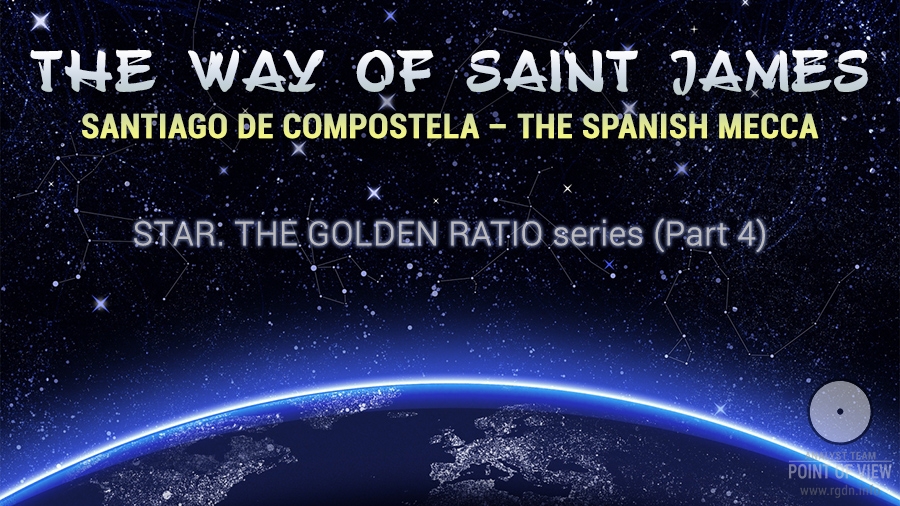












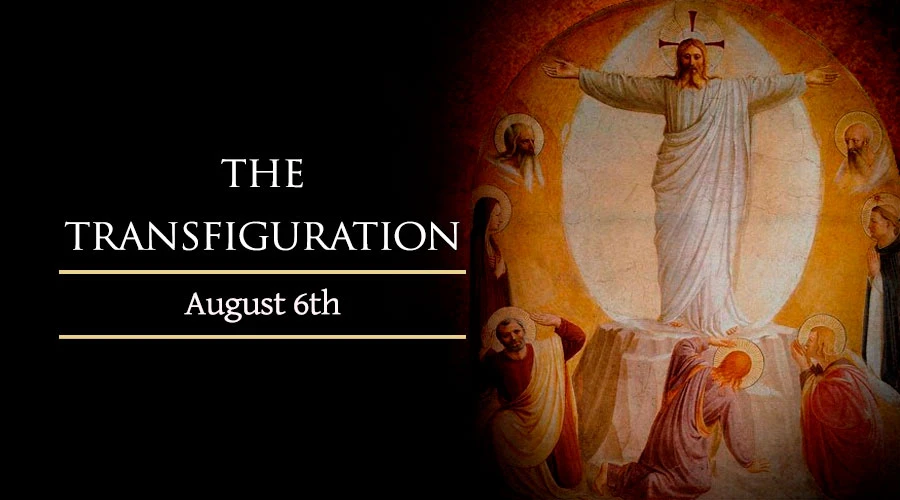


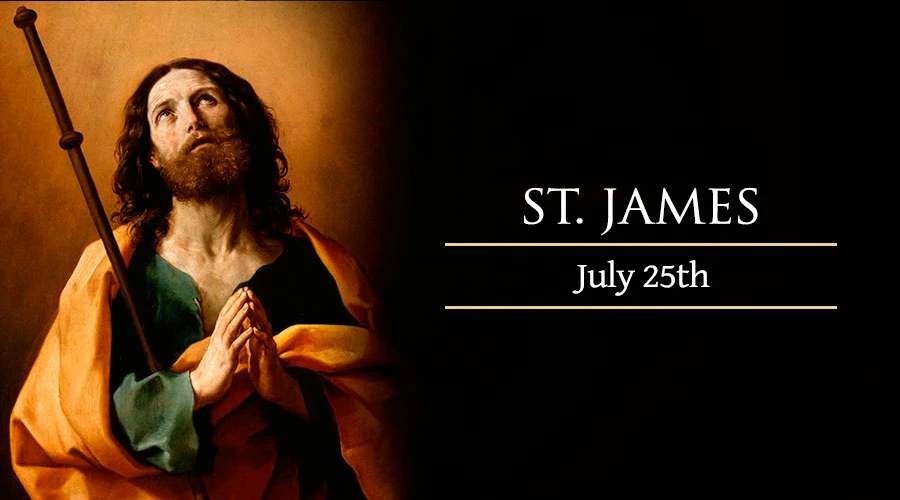













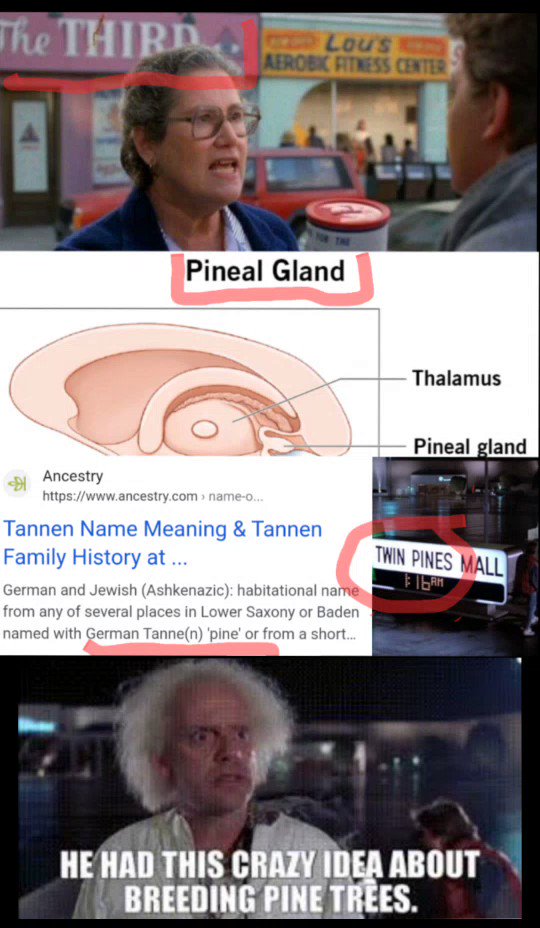

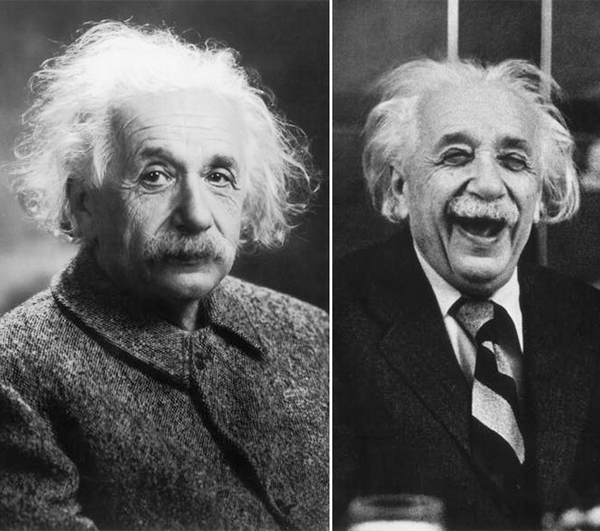


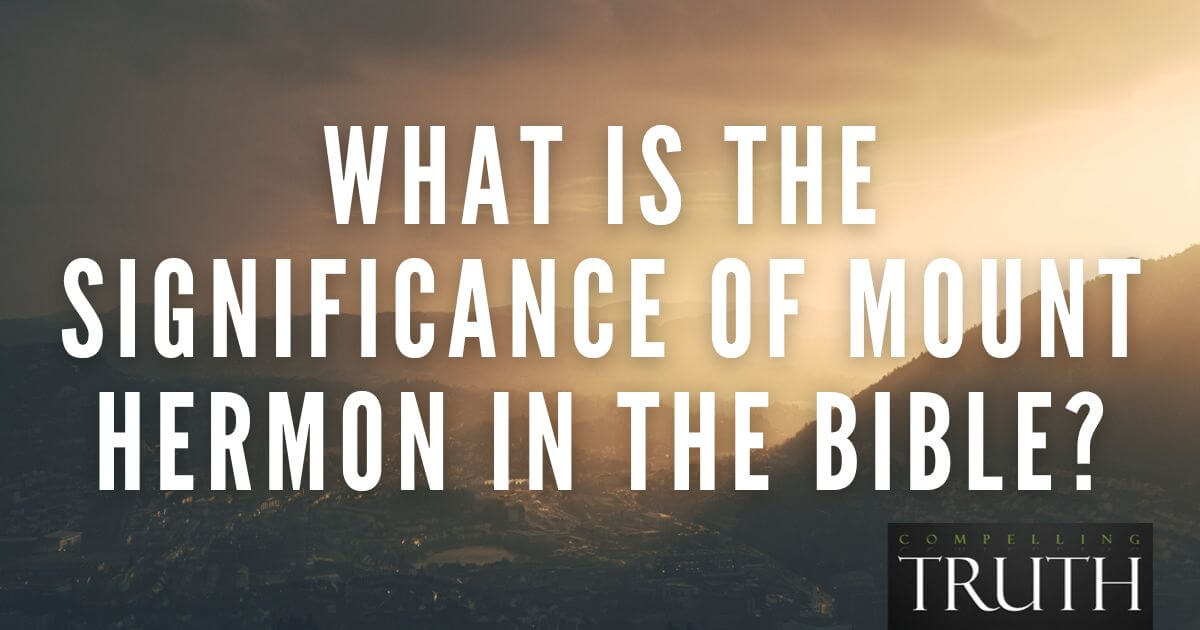
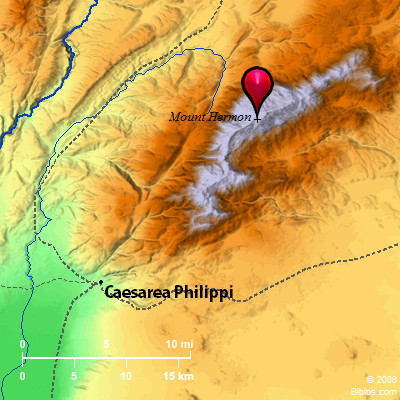
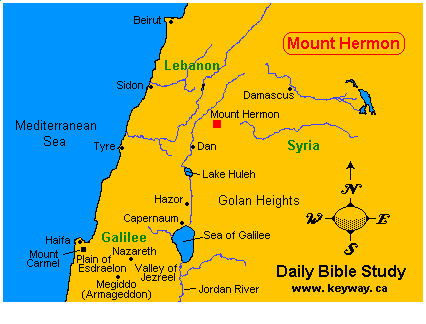
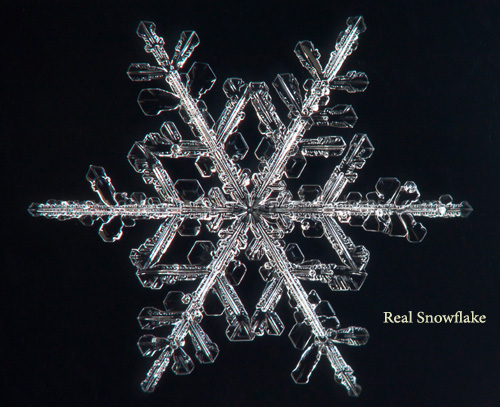



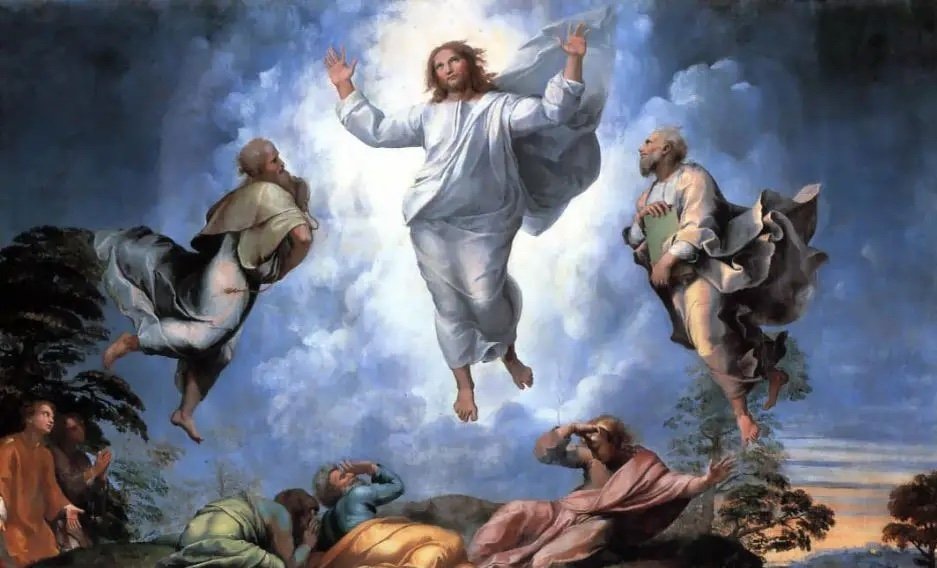

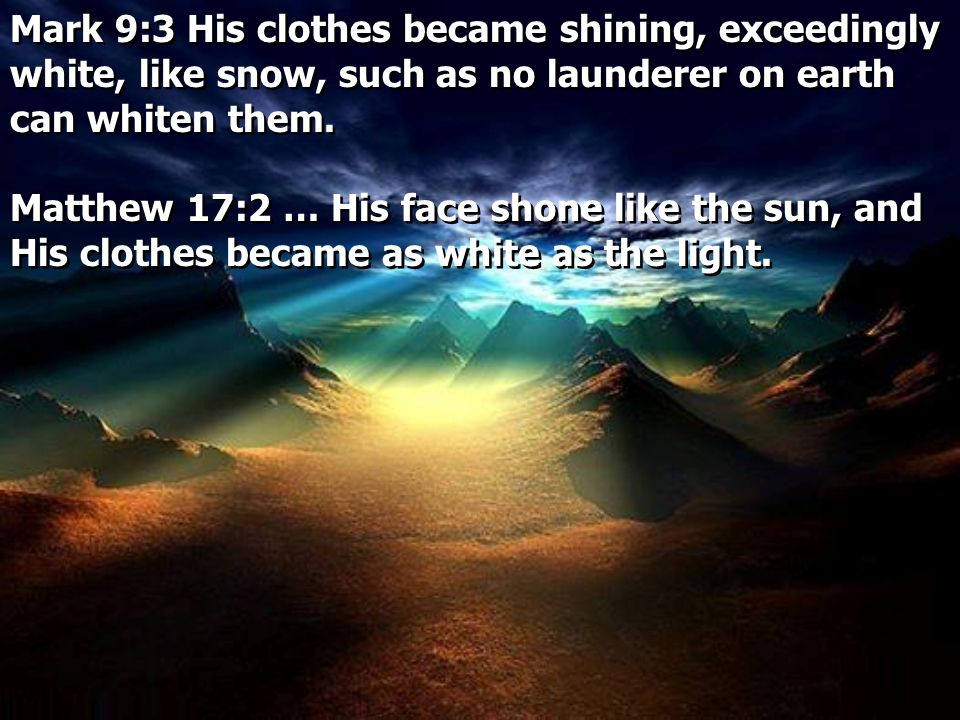

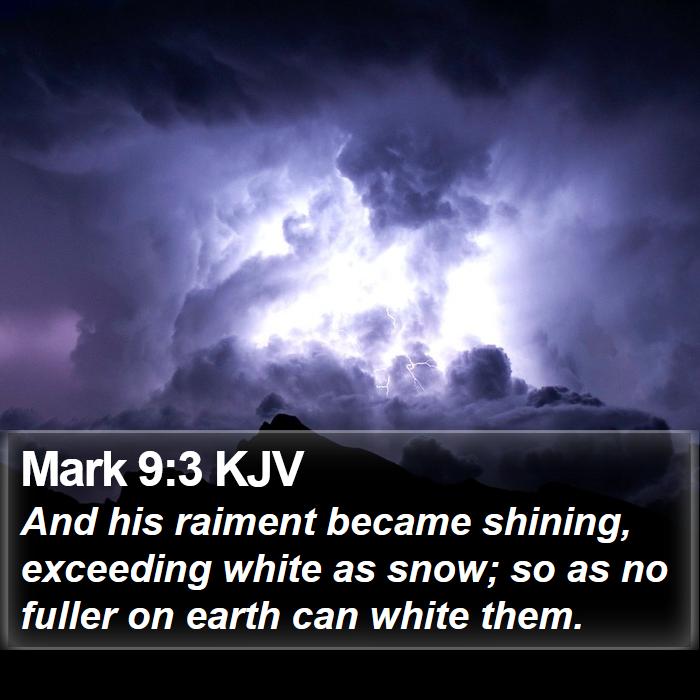

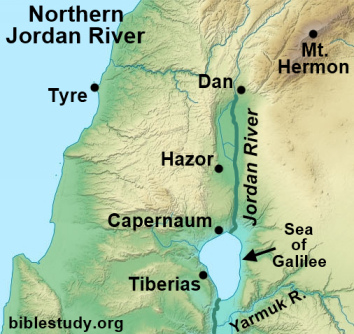
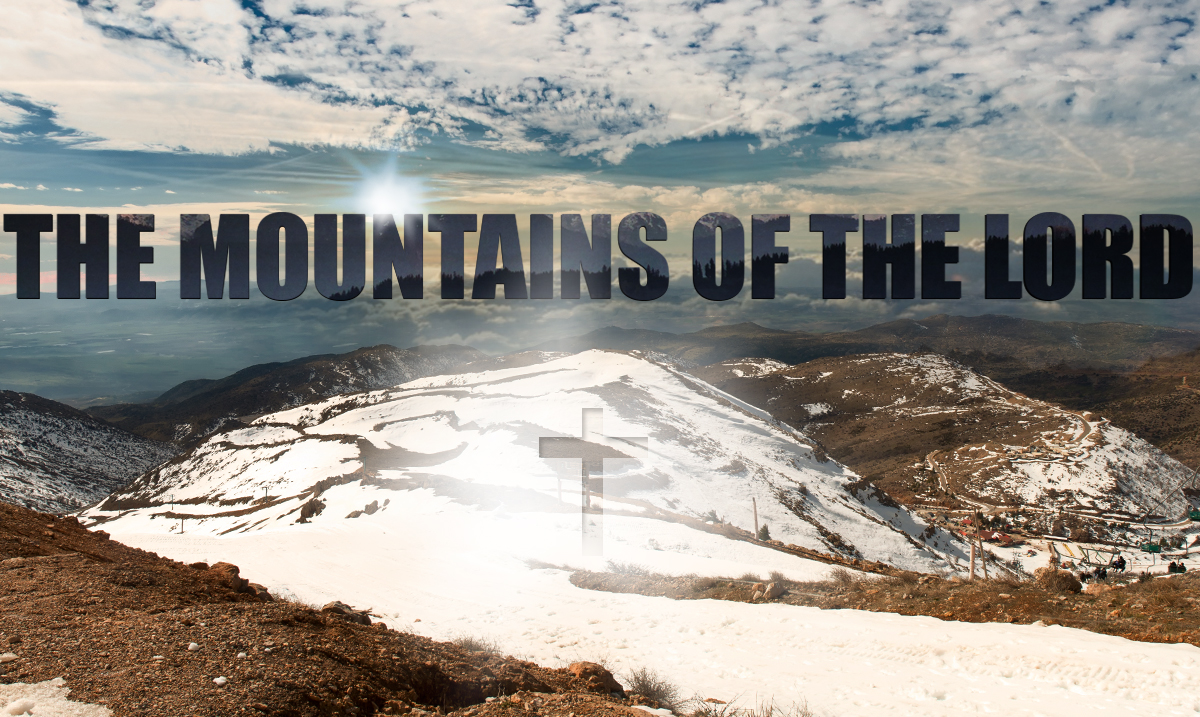




![Revelation 1:14 (lsv) - and His head and hairs [were] white, as if ...](https://img2.bibliaya.com/Bibleya/verse/revelation-1-14-lsv.jpg)









